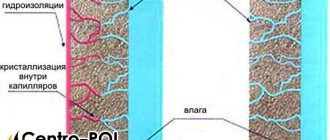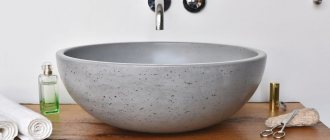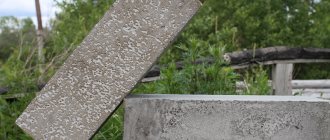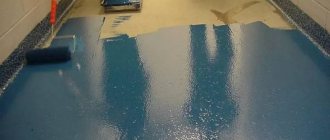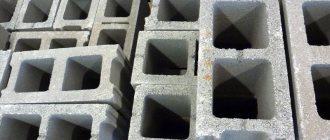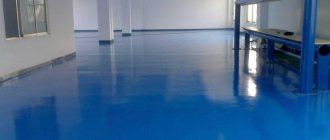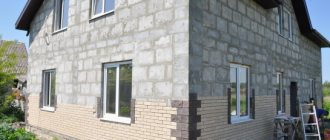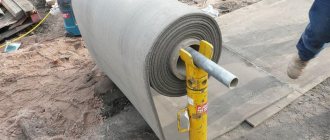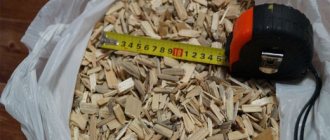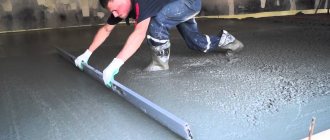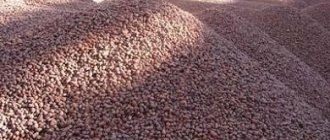Long-term preservation of the purity of water in swimming pools is the merit of the devices responsible for circulation.
Particularly advantageous in this regard are overflow pools installed in places with high human traffic. A huge advantage of the water circulation scheme of an overflow pool is that water is drawn along the entire perimeter of the pool. The dirtiest water in the pool is on the surface, and, thanks to the design of overflow pools, there are no areas in which dirty water could stagnate. The design feature of overflow pools creates additional difficulties during their installation. Firstly, this is an overflow container, which requires at least additional space for placement, and secondly, additional inserts, an overflow tray and a grid will be required. An overflow pool can be contrasted with a skimmer pool. Its design is simpler, but water filtration is slightly worse.
§ Market offers: manufacturing companies, prices.
Many companies are engaged in the development of indoor pool projects, their manufacture and installation.
Among them, “Aqua-Lux”, “Albion”, “Aspar Pool”, “Water World” (Fiber Pools brand), “Vseslav”, “Gallery Pools”, “DMV”, “Orion GEO”, “Premium Aqua” are well known ", "Yuventa-group" (all - Ukraine). “Aspar Pool”, “A”, “Gallery Pools”, “DMV”, “Steel Bowls” are specialized in the production of concrete tanks and are represented by the Astralpool trademark (Spain). Polypropylene tanks are manufactured by Albion and Aspar Pool. Reservoirs (bowls) made of polyvuplen (sheet polypropylene) are made by Albion. Fiberglass bowls are produced by “Water World” and “Orion GEO”. Ready-made fiberglass tanks are also represented by foreign brands, such as: Astralpool (Spain), Compass Pools (Australia), Jean Desjoyaux (France). Depending on the dimensions, materials of manufacture, preliminary work, complexity of the design and the set of associated equipment, prices for fully equipped indoor pools (“turnkey”) start from approximately 6 thousand dollars. 3.25 Rating 3.25 (18 Votes)
What to read on the topic:
- 11/17/2015 — Plumbing for children. Ideas for arranging a children's bathroom
- 11/17/2015 — Sewer septic tanks for a private country house
- 11/17/2015 — Shower panels with hydromassage. Models, prices. Panel installation
- 11/17/2015 — How to arrange a bathroom comfortably, quickly and inexpensively
- 11/17/2015 — How I made a shower in a bathhouse at the dacha. Design and operation of the shower
Overflow pool diagram
The detailed structure of the entire bathing facility is shown in the diagram below. Here are all working communications:
- filtration system;
- disinfection units;
- pumping units;
- supply pipelines;
- valve mechanisms;
- gutters, tanks, adapters.
How does a pool overflow work?
The edge of the water poured into the bowl is usually located flush with the sides. There are unique gutters along the perimeter. The entire system is equipped with an overflow tray along the entire length of the structure. The water displaced by bathing people does not fall overboard, but flows along such a tray. From there it flows to the balance tank. There it is cleaned and sent back to the bowl through the nozzles.
How to overflow a round pool
According to the requirements of building codes, the radius of a round pool bowl is more than two meters. It is important to position the bowl correctly to ensure a comfortable rest.
In this case, the design features of the overflow system should be taken into account:
- a tray located in a pit is constructed along the perimeter of the reservoir;
- the trays are joined with a slight slope towards the storage tank.
The design of the overflow system for a round pool does not differ from the water drainage system for pools of other configurations.
TOP 3 best models on the market with descriptions, photos and approximate price
There are many models of inflatable pools on sale that have their own qualities and functional features. When purchasing a pool, you must be guided by its purpose and characteristics. Let's look at the best models designed for people of different ages.
Children's
Popular models designed for babies:
Intex Sunset Glow Three Ring 57412
The bowl is round in shape, with a diameter of 114 cm and a depth of 25 cm. An inflatable side of three rings and an inflatable bottom. Cost - 700 rubles.
A small bowl with a diameter of 70 cm and a depth of 21 cm. Inflatable multi-colored sides (3 rings), inflatable bottom. Price - 700 rub.
Bestway Underwater World 51121
This is a bowl for children under 7 years of age. Depth - 51 cm, diameter - 152 cm. The sides are made of three inflatable rings, the bottom is hard. Price - 1700 rub.
Children's bowls are divided into models for the smallest (about 20 cm deep) and for children aged 4 to 7 years (bowl depth - 40-50 cm).
A review of children's inflatable pools is presented in this article, models for children under 1 year old are presented in this article, models with a sun canopy are presented in this article, and a rating of popular models is presented in this article.
For adults
The best models of inflatable pools for adults:
Jilong Prompt Set JL017448NG
Gray bowl with white inflatable ring. Diameter - 450 cm, depth - 106 cm. Equipped with circulation equipment. The cost of the pool is 20,000 rubles.
Bestway Fast Set 57212 / 57291
The bowl is round, blue. Diameter - 549 cm, depth - 156 cm. The bottom is hard, the kit includes a set of circulation equipment. Price - 35,200 rubles.
Intex Easy Set 57929
Bowl with one upper inflatable ring, diameter 542 cm and depth 122 cm. Cost - 48,000 rubles.
Pools for adults have the largest dimensions of all inflatable models.
Family
Family pools are designed for shared use by people from different age groups. Best models:
Bestway Fast Set 57242
The bowl is light gray, diameter 457 cm, depth 122 cm. Complete with a set of circulation equipment. Price - 35,500 rubles.
Jilong Prompt Set JL010217NG
Round bowl with a diameter of 450 cm and a depth of 106 cm. Standard equipment includes circulation piping elements. Price - 11,800 rubles.
Intex 26168
Bowl diameter - 457 cm, depth - 122 cm. Model price - 26,000 rubles.
Family pools are not much different from adult pools. Typically, for such tasks, bowls with a shallower depth are chosen (no more than 122 cm).
The best models of inflatable pools are discussed in this article; the average price for inflatable pools and tips for saving money when purchasing can be found here. A review of inflatable pools with Jacuzzis is in this article, SPA models are in this article, heated ones are in this article.
You can find a rating of inflatable pools with a slide for children and adults here.
Recommendations for maintenance of overflow pools
A hydraulic structure with an overflow does not require constant maintenance. An automated water purification and circulation system maintains the transparency and cleanliness of the contents of the bowl for a long time. A complete cleaning cycle (recirculation) occurs in 2 hours.
- The contents of the bowl can be completely replaced once every 3 years.
- Protective grilles require periodic cleaning. Plastic embedded elements will have to be cleaned more often and also replaced as they wear out. Stainless steel gratings can last longer and are easier to maintain.
- The consumption of chemical reagents is dosed by an automatic system. Disinfectants should be added to cleaning devices following the manufacturer's recommendations.
The effective functioning of the systems is supported by basic compliance with operating rules throughout the entire period of use of the hydraulic structure with an overflow system.
Water treatment
Before supplying water to the pool, the instructions require that it be prepared: heated to a given temperature and disinfected.
Disinfection
The pool water temperature is considered comfortable in the range from 27 to 35 degrees. But at this temperature, bacteria and pathogens actively multiply in it.
Therefore, it is very important to regularly disinfect it and care for the bowl.
Care products
Various methods are used for cleaning and disinfection: mechanical, chemical, biological. Mechanical cleaning involves filtering it to remove inorganic contaminants. Different filters are used: membrane, carbon, sand, etc.
A filtration installation often includes several types of filters
Chemical methods include the introduction of chemical compounds into water that have the ability to kill viruses, bacteria and fungi.
The most common of them:
Chlorine. Previously, chlorination of water was the only method of disinfection. Moreover, the compositions used were very aggressive and caused irritation of the skin and respiratory tract, and redness of the eyes. Now such compositions have been stabilized, leaving no more than 60% active chlorine in them. They are available in the form of tablets or granules that dissolve well in water and do not affect the pH level. In small private pools, they are simply thrown into the water with their own hands without the use of dispensers.
Chlorine preparation for swimming pools in tablets
Bromine tablets for swimming pools
Biological disinfection methods that destroy bacteria, algae, skin sweat and other pollutants include ozonation, ionization and ultraviolet irradiation. They can significantly reduce the dose of chemical reagents.
| Method | Operating principle |
| Ionization | Water is disinfected with silver or copper ions. With direct contact with these metals, the effect is insignificant, so special ionizer devices with copper or silver electrodes are included in the pool water supply system. |
| Ozonation | Ozone is one of the most powerful oxidizing agents that eliminates any organic pollution. After the process is completed, it turns into oxygen without affecting the color, smell and pH of the water, preserving useful microelements in it. The method is simple and effective and does not require consumables - ozonizer units produce gas on site from oxygen in the air. |
| Ultraviolet irradiation | After leaving the filters, the circulating water enters a disinfection chamber, where it is exposed to ultraviolet rays. |
Heating
To maintain a given pool water temperature, several methods are used, the choice of which depends primarily on its size.
An instantaneous water heater is used only for small pools, since it consumes a lot of electricity, and its power, even the maximum, is only enough to heat a volume of water of no more than 30 cubic meters.
Water supply in the pool - diagram with a flow-through heater
A heat exchanger is one of the most economical devices that is connected to the general heating system of a building. Inside it there is a coil through which the coolant moves. By washing the coil, cold water from the pool is heated and leaves the heat exchanger already heated. This circuit is used to heat water in most large swimming pools.
Scheme with heat exchanger
The solar collector allows you to heat water almost free of charge - costs are only required for the purchase and installation of equipment. Collectors in the form of black screens absorb sunlight, which heats the coolant inside them. A circulation pump pumps it through a tank with a heat exchanger, and from it heated water is supplied to the pool. The larger the collector area, the greater the volume of water it can heat.
Scheme with a solar collector
Construction of an overflow pool
Infinity pools are a very beautiful thing, and beauty, as you know, requires sacrifice. In our case, material sacrifices. Overflow pools are not cheap. Unlike skimmer pools, water from overflow pools is poured out by gravity through the sides and then cleaned with a special filter. This means that this type of pool should be equipped with an additional technical room. It is usually located in the basement below the water level. Such a technical room is an additional container into which water drains by gravity, and occupies an area of 7-10% of the volume of the pool. For home pools, the capacity is about 10% of the pool volume. To build large public swimming pools, the area of the bowl is multiplied by 0.06, plus the volume of liquid displaced by people in the pool, as well as the volume of water intended for washing the cleaning filters.
Construction of an overflow pool
Where to order the construction of a swimming pool
You can order the construction of turnkey swimming pools at. Our specialists will provide a full range of services: from consultation, design, construction, installation of equipment and maintenance of pools of all types, shapes and sizes.
We work throughout the Southern Federal District, including the cities of Armavir, Krasnodar, Labinsk, Maykop and Sochi.
In addition to the construction, including overflow and skimmer pools, we are engaged in the wholesale and retail sale of chemicals and related equipment for swimming pools.
Preparing for winter
The maintenance procedure for a polypropylene pool also includes such an important point as its preservation before winter.
To do this, you need to perform the following basic activities:
- Rinse the filtration system, removing all the “chemistry” of disinfectants from it.
- Drain the water.
- Clean the bowl from all dirt.
- Fill the pool located in a heated room with new water with the addition of a special reagent that prevents the growth of algae.
- Place objects in the water that compensate for volumetric expansion (plastic cans, polystyrene foam).
In an unheated pool, it is necessary to dismantle the removable elements of the hydraulic system, thoroughly clean them and dry them. The valves in the technological shaft should be opened, and plugs should be installed at the ends of the pipes (put on plastic bags).
Rules for operating and maintaining the pool
Setting up and operating a swimming pool is not an easy task. This applies to both private and public construction. The system requires regular care and maintenance. The process of using a pool should be enjoyable and not cause harm to a person. Water must be hygienically impeccable and transparent.
The basics of service are:
- troubleshooting and troubleshooting;
- preventing the appearance of mineral deposits and contaminants in the bowl;
- water quality control;
- testing of robotic systems.
The construction and operation of a swimming pool must be taken seriously. Among the one-time events it is necessary to highlight:
- cleaning the bowl and treating it against algae;
- preservation and preparation for use.
To clean the bottom and walls, you need to moisten them with water if the bowl has been empty for a long time. Modern coatings are quite durable and are not so easily damaged by mechanical stress, but moisturizing can make cleaning easier. This process is technological, and it is better to use special equipment to remove contaminants. These can be guns for applying foam, pumps for pumping out dirty water, rotary machines for cleaning the bottom.
If, due to the high content of salts in the liquid, a white coating appears on the walls, then it is unlikely to be possible to scrub it off with a brush. A special descaling agent should be used. It is not recommended to use chemical household preparations, as they are often ineffective and contribute to the appearance and growth of microorganisms, as well as algae, in the joints between tiles. Therefore, there is a risk of damage to the stainless steel product if it is not protected from cleaning agents.
After installing a pool on the site, it is better to take care of it in a timely manner, eliminating the costly and labor-intensive cleaning procedure using many devices and means after a long time. Among the comprehensive measures, surface treatment against algae should be highlighted. After cleaning, a special solution should be applied to the walls and bottom to prevent the appearance of living microorganisms. This procedure must be carried out before each filling of the pool. If it is not used all year round, the pool is prepared to be stopped or started before closing for the winter and opening in the summer.
As for open containers, they are cleaned and treated with products before the onset of cold weather. In this case, it is necessary to drown the expansion compensators in the water and cover the bowl with a protective cover
It is important to know how filters are maintained. Good condition is the key to the safety and frequency of the capacitance
Filters are subject to high loads, they work even if the pool is not in use, otherwise bacteria and algae may begin to multiply in the water, the liquid will become cloudy and acquire an unpleasant odor. Filters must be washed, this procedure must be carried out regularly. These works are carried out once a week.
Principle of operation
The simplicity of the design ensures long-term operation of the system. The operating principle of overflow reservoirs does not imply anything complicated . The liquid that overflowed over the sides and fell into a specially designed chute is drained into the tank, which is located in front of the filtration system. Liquid purification is ensured by chemical agents that have disinfecting properties.
The process of water purification itself is carried out in the inner part of the filters, after which the heated liquid is directed through nozzles back into the reservoir bowl. To make the procedure faster, special trays are used that can improve the quality of cleaning. Some users may think that pool overflow devices require complex installation, but they are fully justified by the long-term high-quality purification of water in the structure.
Article on the topic: How to remove dirt from the bottom of a pool
Overflow pool diagram
The list of equipment can be expanded, a station for measuring and dosing chemical reagents can be installed. Install an automatic filter barrel washing system.
Calculation of the pool overflow tray
- Overflow tray with silencer
- Concrete overflow tray with tile finish
The cross-section of the overflow tray is determined by the formula (clause 10.27 SP31-113-2004 “Swimming pools”):
S=0.063N/L+0.0003Q/kn, where:
- N-number of simultaneously studying;
- L is the length of the overflow gutter;
- n – number of drain holes;
- Q-circulation flow;
- k=2 - with a two-way approach of water to the drain holes.
A special tray is formed in a concrete bowl around the perimeter. Exhausts or silencers are installed in it. The top is covered with an overflow grille, which should perform the following functions:
- Decorative overflow protection: you can walk on it.
- Filtration of large debris.
- Water leakage.
The grille can be metal or ABS plastic. The second option is more popular due to the price. Although visually inferior to stainless steel grilles, which are also not resistant to ultraviolet radiation and chemicals.
How the grid for overflow and removal of contaminants is designed
A grill is installed above the receiving tray, which performs the following functions:
- receiving water displaced by waves into a tray;
- retention of large debris on the surface;
- decorating the contour of an overflow pool.
For the manufacture of the receiving grille, polypropylene is used, which is resistant to ultraviolet radiation and has increased strength. The lattice contour is formed from individual elements connected using special locks. The design features of the decorative grille allow it to be used for water tanks of various configurations and sizes.
The main differences between overflow pools and skimmer pools
- The area for water intake by a reservoir of the first type, intended for cleaning, is several times larger than that of skimmers. There, water flows through small windows made on the sides of the bowl.
- The overflow pool water remains clean for a long period. The amount of chemicals required for cleaning is much less than for skimmer ponds.
- Skimmer-type reservoirs have insufficient removal of surface contaminants to the filtration and purification system compared to overflow ones.
- Skimmer systems have a high probability of forming stagnant zones, which cannot be the case with overflow systems.
- The water level of skimmer pools is located below the level of the side. This contributes to the deposition of dirty fatty waterline on the walls. With overflow structures, thanks to the intense circulation of liquid, this never happens.
Differences between an overflow pool and an artificial reservoir with a skimmer system
At first glance, all pools are similar in their design. Uninitiated people think that an artificial reservoir is a reservoir equipped with a water supply and purification system. However, the design of overflow pools, while generally similar, is fundamentally different from skimmer pools. There is also a big difference in the maintenance of an artificial lake.
The main differences between overflow pools:
- You can use the reservoir for public bathing - the water in the tank is constantly renewed and passed through a system of hard filters.
- A lesser degree of contamination of the liquid - rising water flows, which are supplied by nozzles built into the bottom of the bowl, lift debris and turbid deposits to the surface. Thanks to recirculation and constant overflow, the displaced contents carry all contaminants into the tank.
- The level of the contents of the container is located on a horizontal surface - in skimmer pools the waterline is below the sides of the bowl.
- The liquid is drained along the entire perimeter of the artificial lake - for this, overflow grates are installed along the entire contour of the bathtub, through which the water first enters the filter unit and then into the overflow tank. Skimmer artificial reservoirs collect water through holes in the walls of the bowl. The drains are placed at a calculated distance from each other, just above the waterline. Water entering them goes into the drainage system through pipelines.
The costs of constructing a hydraulic structure with an overflow are higher than those of constructing an artificial lake with a skimmer. This is explained by the need to arrange additional premises for the installation of more complex equipment. However, the high cost of a pool with an overflow system is compensated by reduced maintenance costs, economical consumption of chemical disinfectants and cleaning agents, and an increased service life.
The final stage
Initially, you need to decide what shape you want to make a pool for your dacha or country house. Experts recommend choosing the simplest ones - rectangular or oval, because such a tank is the easiest to care for. In addition, to install a properly functioning filter system, you will need a power calculation and additional equipment, which will affect the final cost of the design.
Next, you should determine the location of the pool. If it is located in an open area, then it should be placed away from trees, since their root system over time can damage the integrity of the structure, and falling leaves will add hassle to water purification. When choosing the location of overflow pipes, you should start from the direction of movement of air masses - if installed correctly, debris and leaves that fall into the water will go away along with the overflow waters.
The preparatory stage of constructing a polypropylene pool involves the formation of a pit. Its dimensions are always larger than the bowl. The depth increases by 350-400 mm, and the width and length by 800-900 mm. Such reserves of space allow you to install and fix the bowl and mount pipelines.
After forming the pit, a gravel “pillow” 200 mm high is created or crushed stone and sand are used. This layer is needed to protect the bowl from ground movement. In areas where groundwater is located close to the surface, additional drainage should be installed.
Next, a reinforced concrete slab is formed. Its height must be at least 300 mm, and its dimensions are 200 mm larger than the parameters (width and length) of the bowl. Cells measuring 250-300 mm in size are created from steel rods, the structure is painted and filled with concrete.
After forming and installing the bowl, embedded elements are installed - bottom drains, skimmers, pipes for supplying and draining water, filters and lighting devices are installed.
Concrete is poured between the bowl and the pit. The work is carried out in several stages. Each subsequent layer is performed after the previous layer of concrete has hardened. The solution is placed at a height of 300-350 mm. Water is poured into the pool, and its height should be 350-400 mm higher than the level of the solution. This is necessary to prevent the bowl from becoming deformed.
Additionally, a pool at the dacha can be equipped with heaters, hydromassage, slides, descents, and flow amplifiers to create a countercurrent. The final stage of installation is the commissioning and commissioning of all components and installations.
Technology system
Overflow pools use overflow-type designs that need to be built well in advance to avoid any unpleasant surprises. The overflow pool system includes the following elements:
- bowl;
- sides;
- drainage system (gutter);
- gutter;
- an overflow tank that looks like a large container;
- filters;
- injectors.
If there is a possibility or need, then additional devices are installed in addition to the above, which are capable of distributing the total load. To ensure high quality water purification, the design includes the following filters:
- sand;
- for deep cleaning;
- autochlorinator
Features of installation and arrangement of the tank, pros and cons
Modern technologies for the construction of overflow tanks can significantly reduce the duration of their construction, as well as significantly extend the period between scheduled maintenance. The owner of an overflow pond for a long period after completion of installation work and putting the pool into operation does not face problems associated with repairs and maintenance. The purity and transparency of the water is ensured by a built-in automation system. Let's consider the advantages of the design and analyze the disadvantages.
What are the advantages of an overflow pool?
The main advantages of an overflow pond:
- attractive appearance of the structure due to the coincidence of the water surface with the side edging;
- uniform spreading of pouring water through the holes in the grates located along the contour of the pool;
Overflow pools have more advantages than disadvantages
- flow of displaced water by gravity into a storage tank located in a separate room;
- uniform distribution of supply nozzles along the bottom of the reservoir, preventing the accumulation of turbidity and sediment at the bottom of the container;
- the ability to order a swimming pool of various configurations, corresponding to the artistic designs of the owner;
- intensive circulation water exchange, preventing the formation of areas where pollution is concentrated;
- absence of salt deposits, debris particles, grease stains and rust along the waterline of the pool;
- accelerated payback for a swimming pool equipped with a water treatment system, which does not require the purchase of additional chemicals.
Overflow pool - weaknesses
Like all types of outdoor pools, an overflow tank also has disadvantages. Transparent pavilions and coverings are not able to reliably protect the water surface from insects, leaves and dust. As a result, gradual water pollution occurs. However, this disadvantage is easily overcome by a water purification and disinfection system.
The main disadvantages of the overflow design:
- increased costs for the construction of an overflow pool compared to a skimmer structure;
- the need to locate a technical room with equipment below the surface of the water surface.
- additional area required for the construction of an overflow system with grates and trays.
Despite its shortcomings, an overflow pool is widely popular.
Installation of an additional technical room, the level of which should be below the water level of the container being filled
Design and principle of operation
To arrange the PB, additional space is required, since the system includes a special container. Features of operation and device:
- The surface of the water is flush with the floor, so the liquid is simply redirected over the side, splashing into the drain grate.
- For an overflow artificial reservoir, a special storage tank is installed, amounting to at least 10-12% of the reservoir volume.
- If the pool is installed indoors, then the overflow system requires another area located below the level of the reservoir. Nozzles, filtration devices, a gutter and a compensating tank are installed here, which will allow water to circulate freely.
What's included in the system?
Overflow equipment consists of the following elements:
- overflow vessel;
- return nozzles;
- gutter and drain;
- filtration station;
- disinfectant device;
- dosing device for normalizing the pH level;
- coagulant substation;
- automated control panel.
How does water circulate?
Circulation process
carried out as follows:
- Water overflows over the sides, entering a gutter located along the entire structure, due to which the water level always remains the same (along the sides).
- Next, the liquid enters the reservoir. It is equipped with a controller and an idle pump, which redirects the liquid to the filter station. An automated security system is also installed inside.
- Then it goes to filters, which have cleaning and disinfecting properties (bacteria are destroyed, debris is neutralized).
- From the filters, the water returns to the swimming tank, passing through the nozzles located on the bottom. They are located along the entire bottom, so that purified water enters the pool as evenly as possible.
Article on the topic: How to cover an intex pool
Overflow filtration system
It is more advisable to install pools with an overflow system for public or sports reservoirs, since an increased level of filtration is necessary when there is a large concentration of swimmers. Therefore, cleaning equipment must be powerful. Filtration gratings have their own characteristics:
- The grille is designed to cover the overflow tray.
- The pool can have any configuration (square, round, oval), since the filters are plastic.
- In production, polypropylene is used, which does not deform and does not lose its properties from high humidity or exposure to ultraviolet radiation.
- There are about 45 sections per linear meter of the grille, which are connected with specific locks.
- The filtration system contains devices filled with disinfectants and substances to restore water acidity and coagulability.
Review of popular models
The company's arsenal includes many different models of filter pumps that provide water purification in bowls of different sizes and configurations. They are able to work in the most difficult conditions, show durability and high reliability.
Sand
Popular sand filter models:
58515
Sand self-priming filter pump with a capacity of 2006 l/hour (2 m3/hour). Designed for water purification in bowls with a volume of up to 8 m3. The manufacturer limits the scope of use only to frame pools. The mass of filler in the tank is 8.5 kg. Price - 10,000 rubles. Read reviews here.
58497
Filtration capacity - 5678 l/hour (5.678 m3/hour). The model is designed to work with inflatable or frame pools with a volume of up to 20 m3. Filler weight - 9 kg. The cost of the model is 14,000 rubles.
58499
Powerful model with a throughput capacity of 8327 l/h (8.33 m3/h). Equipped with a self-priming pump, designed to work with frame or inflatable pools. The maximum bowl volume is 30 m3. Sand volume - 9 kg. The price of the filter pump is 14,900 rubles.
Analyzing the parameters of these models, one can note a slight difference between the amount of filler. It can be assumed that the most productive filter will require frequent washing of the sand.
Cartridge
The most popular models of Bestway cartridge filter pumps:
58381/58145 BW
Compact model for water purification in small bowls with a maximum diameter of up to 366 cm. Capacity - 1249 l/hour. Pump power - 16 W. Filter price - 2300 rub.
58383/58148 BW
The model is designed for water purification in bowls with a diameter of up to 366 cm or a volume of up to 8.5 m3. Filter capacity is 2.006 m3/hour. Price - 2800 rub.
Flowclear
Powerful model with a productivity of 10 m3/hour. Designed for water purification in prefabricated outdoor pools. The cost of the model is 8900 rubles.
Cartridge filter pumps are cheaper than sand ones, but frequent replacement of filter elements gradually eliminates the difference in price. Such designs are usually chosen for pools with low loads that do not require too active water purification.
Sand option
Not the easiest to assemble, but still quite an effective sand filter for a pool, you can construct it yourself. This device is a static tank filled with special sand for swimming pools.
Water passes through this sand, is purified and returns to the bowl. Dirt accumulates along the edges of the filter. It needs to be cleaned at least once a week using reverse flow, which is not economical in terms of water consumption.
What does it need?
To assemble a sand filter-pump for a swimming pool with our own hands, we will need the following materials:
- Pump pump. It is advisable not to take it too powerful; 150 W will be quite enough.
- Plastic container with lid, 40 – 50 l. A wide top entrance is desirable.
- Filler. It can be quartz sand, graphite, coal, etc. Read about filler options below.
- Hoses.
- Clamps.
- Coarse water filter.
- Water intake with fine mesh.
Filler selection
Filters of this type use different types of fillers: sand, coal, graphite, and even devices with glass chips. However, using glass in a homemade filter can be dangerous.
It is also important that the contents are not too small. In this case, the entire filtration system may become clogged.
Sand is the most popular existing filler. It traps debris as small as 20 microns and will keep the pool relatively clean. For additional disinfection of water, quartz sand is also used.
A serious disadvantage of this filler is its rapid clogging; sand also clumps into clumps over time and forms channels through which the water is not purified. This makes sand not the easiest media to maintain.
Graphite and coal also have similar problems, but they trap smaller dirt particles. The cost of such fillers is slightly higher.
Sometimes the contents of sand filters are combined by adding different types of fillers in several layers. This creates a multi-stage cleaning system. However, using more than three different types of filler is not recommended.
How to do it yourself?
install it near the pool
Fill the container with sand. Connect a hose to the top of the tank that will draw water from the pool. A coarse filter must be placed between the tank and the pump.
Next, a hose is connected to the pump, which returns the water back to the pool. This completes the assembly of your device.
Operating principle of a skimmer pool
The name of such structures comes from the English word “skim” - “to remove”. Skimmers are special devices designed to collect the upper layers of water and then direct them for filtration.
A skimmer-type pool is a concrete bowl, reinforced, according to the design, with a reinforced frame. Rectangular holes are made in the side walls of the structure to drain the top layer of water to special filters. The water is then directed back into the pool.
Let's look at the operation of a skimmer pool in more detail:
- clogged water enters the side window on the wall of the bowl;
- the floating valve does not allow clean water to mix with contaminated water;
- debris that enters the reservoir is retained in the filter;
- The filtered water is disinfected and heated, after which it is again sent to the bowl.
When understanding the structure of a skimmer pool, keep in mind that the holes for filtering water are located at a distance of 10-15 cm below the side of the bowl, so it should not be completely filled with water. The number of skimmers depends on the parameters of the reservoir. Typically, one water intake device is installed for every 25 m2 of pool.
